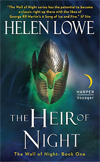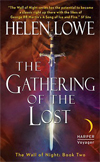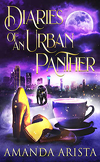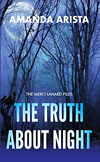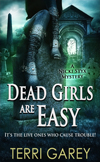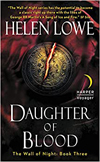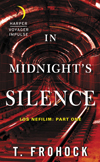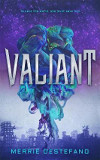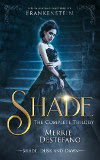... et idem
indignor quandoque bonus dormitat Homerus
And yet I also become annoyed whenever the great Homer nods off. - Horace 23BCE
The 'Homeric Nod', or
continuity as we now call it, has been a problem for thousands of years. Some deliberate, most accidental, continuity is an age old challenge for storytellers everywhere.
I have a friend who teaches the ins and outs of continuity (known also as script direction). She’s brilliant, and no small fry, having been the ‘scripty’ on films as fabulous as
The Matrix series,
The Lord of the Rings (all three) and soon to be released,
The Hobbit. I did tech support for a class she gave last week and I found film continuity not all that different from the issues a novelist faces. A lot of the techniques for catching these errors in film translate well for authors, and it does make a huge difference, having the continuity water tight.
Why?
Because unless it’s a comedy, seeing or reading an anachronism, inconsistency or error will jolt the reader/viewer out of the
participation mystique of the story. Suddenly they are no longer ‘with’ the characters but back in the audience, scratching their heads because a jet just flew over ancient Troy. Oh boy. That’s almost as bad as Edward saying that Carlisle, in 1660, "actually found a coven of true vampires that lived hidden in the sewers of the city . . .” when said sewage system wouldn’t be built for another two hundred years. If the reader knows their history, it’s going to snap them out of ‘it’, and that’s definitely not the goal.
As we can see, big name authors with major publishing houses are not exempt from these problems. Did anyone catch in
Chamber of Secrets where Dumbledore tells Harry that Lord Voldemort is the last remaining ancestor of Salazar Slytherin. Sure JKR meant
descendant but why didn’t the editorial process, and the author, pick that up? (
It’s been corrected in later print runs, something film editors can't do!) Readers are very good at spotting such things and a lot of subsequent print run corrections are due to them writing in. Don't be shy. Your authors appreciate it!
Usually novelists have more control over continuity than script directors on a film set. What writer, for example, would have gorgeous
Captain Jack Sparrow about to say something mouth-watering-witty with the ticky-tag on his bandanna showing? Novelists aren’t dependent on air traffic, sound artists, make up or wardrobe to get it right. But we do end up being all of the above and more when it comes to the final product - a book in the reader’s hands. When the 'poor continuity' hammer falls; it falls squarely on the author’s head. It’s not like we haven’t had a chance to make corrections.
Publishing houses may differ slightly but the editorial process looks something like this:
1) Author hands in manuscript
2) Editor makes general comments
3) Author applies suggestions
4) Editor rereads and may return with more suggestions or send on to the structural editor
5) Structural editor edits the entire ms for form, structure, consistency, meaning, grammar, spelling, context, you name it
6) Ms returns to author to approve or reject suggested changes or rewrite scenes
7) Ms goes to copy editor who edits for grammar and spelling mostly but also consistency, meaning and clarity.
8) Ms returns to author to put in changes/rework

9) Ms goes to proofreaders where one to six proofreaders mark errors and make comments. All the comments from various proofreaders are then transcribed onto one manuscript which the publishing editor reviews. At HarperCollins Aus, this would then result in a phone call (sometimes lasting hours) where the question marks and quirks and ‘ifs’ are discussed with the author. The editor puts in agreed changes.
10) The ms then goes to typesetting and the resulting ‘fourth pages’ are sent to the author to proof.
11) The author catches any errors and shoots the ms back to the publisher (This process is repeated with third, and second pages until they are down to the first pages complete with the dedication, acknowledgements and copyright info.)
12) The author checks those first pages and returns to editor (the turn around time become increasingly shorter with each of these steps)
13) Ms is off to print. Yay!
It's not a haphazard process, yet still mistakes appear. My friend the script director says that in film, it’s often down to the editing process where they have better shot, even with an inconsistency. They’ll take acting over continuity every time.
How about you, readers? Have you ever loved a book but wanted to throw it across the room because of the mistakes or typos? I bet this writer (below) wishes he’d had a copy editor on board! O. M. G!

Kim Falconer is a Supernatural Underground author writing epic science
fantasy novels set in the worlds of Earth and Gaela and beyond.
You can find out more about Kim at
kimfalconer.com or on The
11th House Blog.
She posts here at the SuperntrlUnderg on the 16th of every month. Her
books are available worldwide with free shipping via Fishpond.com. Kim
supports the
IS_Foundation and awareness of environment with her work
 The launch party is Tuesday night at Katy Budget Books. Howard wants to come with me, since he loves getting his photo taken with the ladies. If you contact KBB, you can order a signed book (and I will sign it however you like). You can also order signed backlist books or one of the cool Wild About You key chains, which I will initial and Howard will sign with his paw print.You can find out more, including KBB contact info, at http://katybooks.com/event/kerrelyn-sparks-launch-party-2. Also on Launch Day, please visit my Facebook page where you can see the Red Carpet Premiere of Wild About You. You never know which characters will walk the red carpet! And there's even more fun for Launch Day! Over at Guilty Pleasures Book Reviews, you'll see Howard's early attempts to write a fan letter to his heroine, Elsa.
The launch party is Tuesday night at Katy Budget Books. Howard wants to come with me, since he loves getting his photo taken with the ladies. If you contact KBB, you can order a signed book (and I will sign it however you like). You can also order signed backlist books or one of the cool Wild About You key chains, which I will initial and Howard will sign with his paw print.You can find out more, including KBB contact info, at http://katybooks.com/event/kerrelyn-sparks-launch-party-2. Also on Launch Day, please visit my Facebook page where you can see the Red Carpet Premiere of Wild About You. You never know which characters will walk the red carpet! And there's even more fun for Launch Day! Over at Guilty Pleasures Book Reviews, you'll see Howard's early attempts to write a fan letter to his heroine, Elsa. I'll also be signing with Nora Roberts and other authors at the Turn the Page Bookstore in Boonsboro, Maryland on December 8th at noon. For more info, go to http://www.ttpbooks.com/
I'll also be signing with Nora Roberts and other authors at the Turn the Page Bookstore in Boonsboro, Maryland on December 8th at noon. For more info, go to http://www.ttpbooks.com/


















.jpg)
.jpg)

.jpg)
.jpg)






